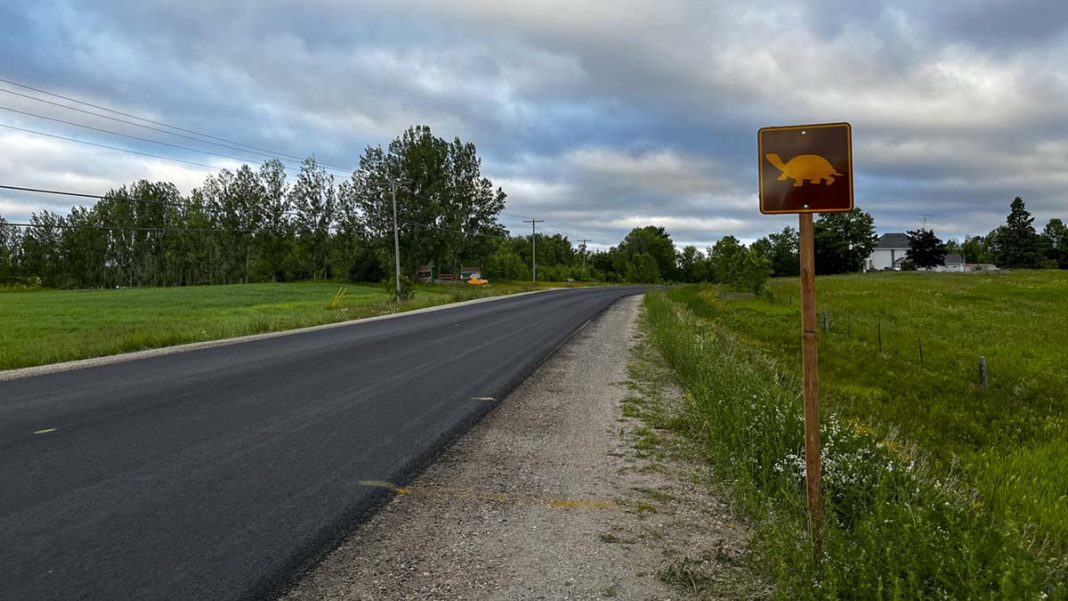ICE LAKE—Turtle signage is a recent addition to the roadsides of the Ice Lake causeway (Highway 540) after a member of the public expressed their concerns to the Ministry of Transportation (MTO), that turtles crossing the highway in this area would be hit by vehicles travelling over the causeway.
The MTO installed turtle crossing awareness signs on Highway 540 on June 23, confirmed Jaclyn Lytle, stakeholder relations advisor, regional services and relationships office with the MTO, Northeast Operations.
“The ministry reviewed the location and confirmed the need for turtle crossing signs due to a number of factors, including the presence of turtle habitat adjacent to the causeway and the winding and narrow highway platform which reduces the opportunities for drivers to notice and avoid turtles,” she told The Expositor in an email.
Turtles are very active this time of year searching for mates, nesting sites and feeding habitat. They often cross roadways at this time, which can lead to vehicle strikes. “They can survive a lot,” said Kelton Adderley-Heron, a Ph.D. student currently conducting research on a Blanding’s turtle population in McGregor Bay.
“They can survive pretty major car injuries,” he said. “They can be pretty damaged.”
It can be hard for many people to know if the turtle is still alive, because they can slow their heart rate down and cut off blood circulation to certain areas if they are impacted, he said. “What kills them is just basically baking out in the sun for a long time after they’ve been hit.”
Mr. Adderley-Heron volunteered with the Ontario Turtle Conservation Centre (OTCC) for several years before working with them as a field technician and then lead hand, prior to beginning his Ph.D. studies. The turtle centre (Ontario Turtle Conservation Centre) provides medical and rehabilitative care to Ontario’s native turtles (which are all at risk species). “They take in a lot of injured turtles, and they have a bumper crop this year,” he said.
A June 18 Facebook post from OTCC stated, “To put it into perspective, an extremely busy day for us would be getting 40 turtles in and we would have ‘all hands on deck’ to help. In past years this would only happen a few times a month, or at worst for a week or so during nesting season. Currently, we have been getting 40 to 50 turtles per day for the last three weeks straight.”
Last year, a record year with 1,512 intakes, they reached the 1,024th turtle on August 6. The OTCC has received over 1,024 turtles so far this year, and that was only halfway through June.
The OTCC does accept dead turtles as well because they could be females with eggs that could be harvested and incubated. “The high mortality as juveniles and hatchlings is offset by their long lifespan and their ability to lay a lot of eggs once they become sexually mature,” Mr. Adderley-Heron said. “As hatchlings, they’re very vulnerable to predation but as they get older, they have fewer and fewer natural predators, which is why it’s detrimental to the population to get hit by cars.”
If you injure or find an injured turtle on the road, call the Ontario Turtle Conservation Centre at 705-741-5000, leaving a message if there is no answer. The centre stresses, “Do not email with information about an injured turtle. An injured animal needs medical attention as soon as possible.”




